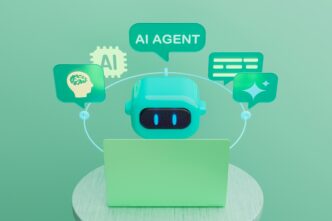The manufacturing industry is facing a crucial turning point. Automation is no longer enough; autonomous manufacturing is now leading the real revolution.
AI agents capable of making real-time decisions are driving this transformation, optimizing every aspect of the production process.
A recent survey revealed that 90% of companies will use automation to improve cost efficiency. However, the cutting edge of innovation goes further. The most advanced AI agents not only automate repetitive tasks, but also make complex decisions. They adjust production parameters in real time, maximizing efficiency and final product quality.
Implementing these cutting-edge technologies requires a structured approach. After helping numerous companies adopt autonomous manufacturing, we have identified four essential steps for a successful implementation.
1. Strategic selection of technologies and suppliers
Before diving into the world of autonomous manufacturing, it is crucial to identify specific business needs. Are you looking to optimize product quality? Reduce waste? Improve energy efficiency? The most advanced AI players can address all of these issues simultaneously, but it is important to be clear on the priority objectives.
When evaluating vendors, it is essential to consider:
- The ability to integrate with existing systems
- Data security and compliance protocols
- Scalability of the solution
- Technical support and training offered
It is crucial to verify that solutions comply with industry-specific regulations. State-of-the-art IA agents not only comply with these regulations, but also help maintain a detailed record to facilitate audits and certifications.
2. Human capital preparation and training
The transition to autonomous manufacturing requires a prepared and engaged workforce. Experience shows that the success of implementation is directly related to the level of employee understanding and buy-in.
A three-tiered approach is recommended:
- Awareness: Educate on the benefits of autonomous manufacturing
- Technical training: Train in the use and supervision of autonomous systems
- Complementary skills development: Encourage analytical thinking and complex problem solving
It is critical to involve employees in the implementation process, gathering their feedback and leveraging their knowledge of the production process to optimize the operation of AI agents. A key strategy that determines success is the alignment of incentives at all levels.
3. Data transformation and preparation
The effectiveness of autonomous manufacturing systems depends heavily on the quality and accessibility of data. Methodologies have been developed to help companies prepare their data for the era of autonomy:
- Identification of relevant data sources: From sensors on the production line to ERP systems and quality records
- Data cleansing and standardization: Ensuring consistency and accuracy of information
- Implementation of real-time data collection systems: Essential for autonomous decision making
- Developing a scalable data architecture: Prepared for future growth
Next-generation AI agents are designed to continuously learn from this data, improving their performance over time and adapting to new production conditions.
4. Continuous monitoring and optimization
Implementing autonomous manufacturing is not a project with a defined end, but a process of continuous improvement. It is crucial to establish clear KPIs and real-time monitoring systems.
Some recommended KPIs include:
- Overall equipment efficiency (OEE)
- Production rate
- Product quality (defect rate)
- Energy consumption
- Unplanned downtime
Advanced AI agents not only help monitor these KPIs, but actively work to optimize them, adjusting production parameters in real time to maximize efficiency and quality.
In addition, it is important to maintain an open dialogue with employees, gathering their feedback and suggestions. The combination of artificial intelligence with human expertise is what truly drives successful execution.
Conclusion
Autonomous manufacturing marks a quantum leap in the manufacturing industry. AI agents redefine the boundaries of what is possible by making autonomous decisions and optimizing processes in real time.
To implement these technologies successfully, companies must:
- Plan carefully
- Prepare their workforce
- Ensure high-quality data
- Commit to continuous improvement
By following these four essential steps, companies can realize the full potential of autonomous manufacturing, achieving unprecedented levels of efficiency, quality and sustainability.
The future of manufacturing integrates artificial intelligence with human expertise in perfect harmony. This synergy drives innovation and sets new industry standards. We should no longer ask ourselves if we will adopt these technologies, but when and how to do it in the most effective way.
By Alex Sandoval,
Founder of Allie






